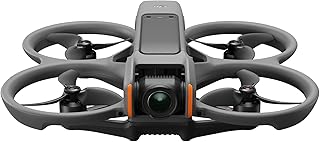DJI Drone Hacking: Protecting Your Privacy
DJI drones are incredibly popular for their ease of use and impressive features, but they've also been subject to significant security concerns. These concerns revolve around potential hacking and data privacy breaches. This guide will outline the key threats and offer practical tips for protecting your privacy when using a DJI drone.
Understanding the Risks:
* Data Collection: DJI drones collect vast amounts of data, including location data, flight logs, photos, and videos. This data can be potentially accessed by DJI and third parties.
* Remote Control: Hackers could potentially gain control of your drone remotely, potentially causing physical damage, theft, or misuse of its capabilities.
* Data Exploitation: Stolen data could be used for malicious purposes, such as tracking your movements, identifying your location, or even compromising your personal information.
* Government Surveillance: There have been concerns that DJI drones could be used by governments for surveillance purposes, particularly in countries with restrictive regulations.
Protecting Your Privacy:
1. Disable Data Sharing:
* Account Settings: Review your DJI account settings and disable data sharing for features like flight logs, photos, and videos.
* Data Upload: Turn off automatic data upload to DJI servers.
* Local Storage: Use an SD card to store your footage locally and avoid relying on cloud storage.
2. Secure Network Connection:
* Avoid Public Wi-Fi: Never connect your drone to public Wi-Fi networks.
* Strong Passwords: Use strong passwords for your DJI account and any other related services.
* Two-Factor Authentication: Enable two-factor authentication for an extra layer of security.
3. Use a VPN:
* Encryption: A VPN encrypts your internet traffic, making it difficult for hackers to intercept your data.
* Location Masking: A VPN can mask your IP address and physical location, protecting your privacy.
4. Limit Flight Data:
* Flight Logs: Delete flight logs regularly, or consider disabling data collection altogether.
* Geotagging: Turn off geotagging for photos and videos to prevent your location from being embedded in the files.
5. Firmware Updates:
* Security Patches: Regularly update your drone's firmware to receive the latest security patches and fixes.
* Official Sources: Only download firmware updates from official DJI sources.
6. Physical Security:
* Storage: Store your drone and its data securely when not in use.
* Anti-Theft Measures: Consider anti-theft measures like engraving your drone with identifying information or using a tracking device.
7. Alternative Options:
* Open-Source Drones: Explore open-source drone alternatives that offer more control over data privacy and security.
Further Considerations:
* Country Regulations: Be aware of the drone regulations in the countries where you are flying.
* Privacy Policy: Carefully read DJI's privacy policy and understand how they handle your data.
* Open Source Software: Explore open-source software alternatives for drone management and data analysis.
By implementing these security measures, you can significantly reduce the risk of hacking and protect your privacy when using a DJI drone. Remember, constant vigilance and staying informed about evolving security threats are essential for staying safe in the digital age.


